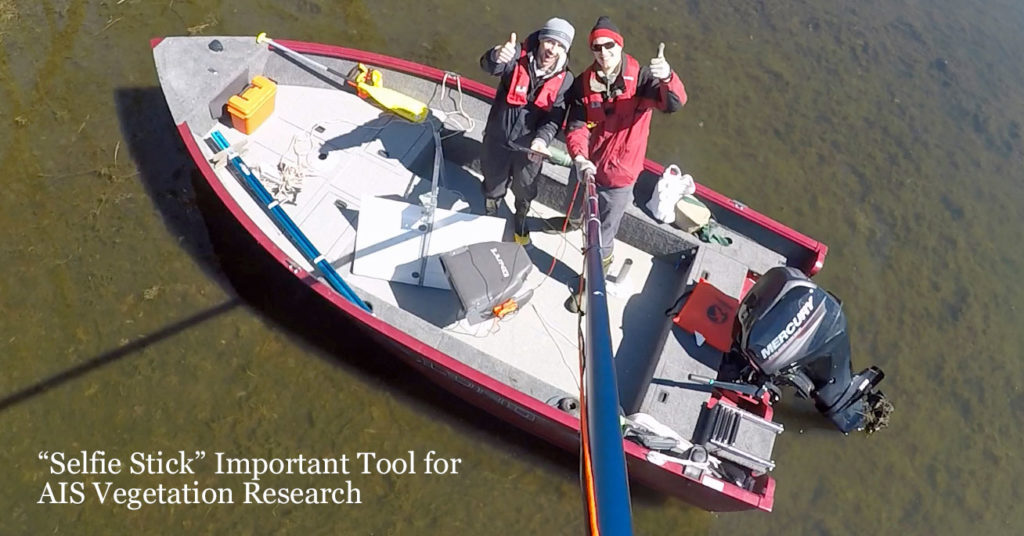
Go Underwater with MAISRC to Study Watermilfoil
For the Minnesota Aquatic Invasive Species Research Center (MAISRC), this month marked the return of open water and the beginning of another field season. Researchers are now out at lakes across the metro area examining the differences between invasive Eurasian watermilfoil, native northern watermilfoil, and hybrid watermilfoil – a cross between the two species which is also considered invasive – in order to gain insight for prioritization and control of these invasives.
Researchers will use a unique sampling device to lower a camera into the water in order to count plant stems at different depths below the water and measure plant heights – check out a video of the underwater camera in action here! They will also record key points in plants’ life cycles, including topping out on the surface, flowering, and senescence. Learning this will help researchers understand how big of a threat this hybrid is and how differences in its growth habits will open up opportunities for control.
“You can’t have a rational, science-based approach to management if you don’t understand the threat,” added Dr. Larkin. “If we learn that the hybrid is a highly invasive super-milfoil, that has different implications for prioritizing control than if it’s a weaker version of Eurasian watermilfoil that happens to be more herbicide tolerant.”
Experimental studies of hybrid watermilfoil have shown greater tolerance of commonly used herbicides by some genotypes. There have also been anecdotal and lab-based reports of increased invasiveness in hybrid watermilfoil. However, context is everything. By systematically comparing the behavior of parent and hybrid watermilfoil species in lake settings, we can better understand their phenology and ecology to help guide management.
Researchers will be sampling ten different lakes with different combinations of northern, Eurasian, and hybrid watermilfoil throughout the summer. Visit the MAISRC website for more information about Eurasian and hybrid watermilfoil.
[Note from the Vermilion AIS team: Eurasian and hybrid watermilfoil are significant concerns at Lake Vermilion. Northern watermilfoil – one of the parents – is native to our lake. It is important to exclude Eurasian watermilfoil – the other parent – and any existing hybrids.]
[Adapted from May 2017 MAISRC newsletter article “Go Underwater with MAISRC.” Photo credit Wes Glisson, MAISRC. Photo text overlay by VLA.]
Read eVermilion